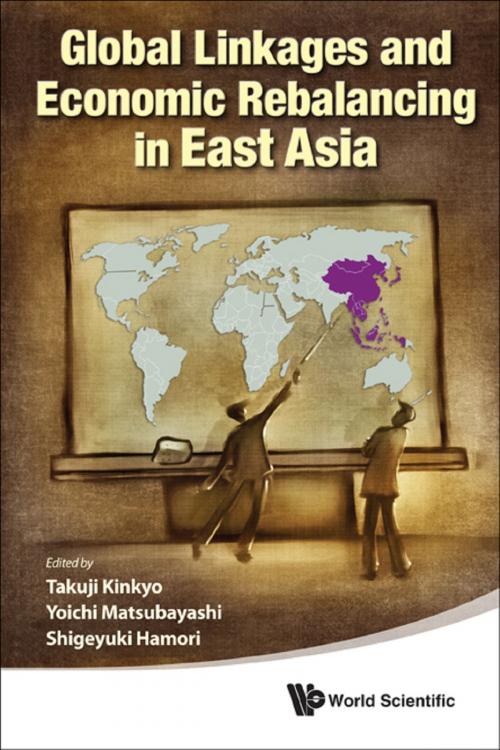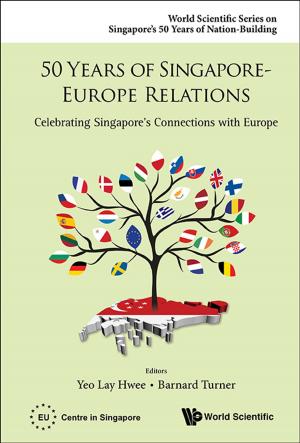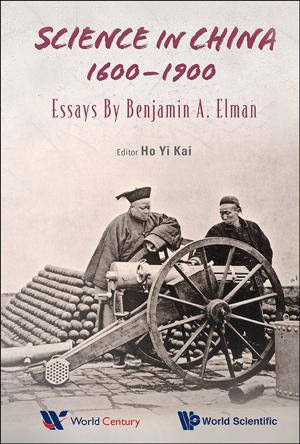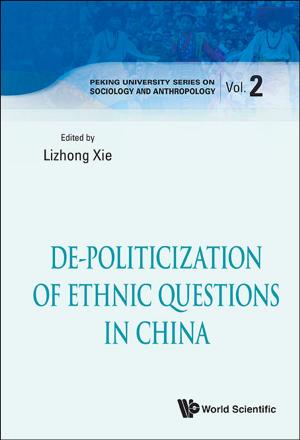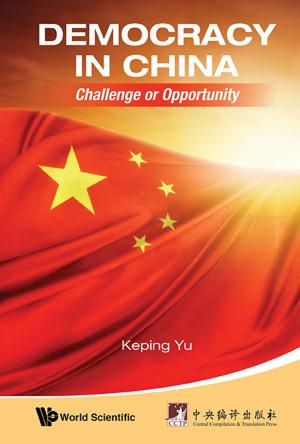Global Linkages and Economic Rebalancing in East Asia
Business & Finance, Economics, International Economics, Economic Development| Author: | Takuji Kinkyo, Yoichi Matsubayashi, Shigeyuki Hamori | ISBN: | 9789814412865 |
| Publisher: | World Scientific Publishing Company | Publication: | December 19, 2012 |
| Imprint: | WSPC | Language: | English |
| Author: | Takuji Kinkyo, Yoichi Matsubayashi, Shigeyuki Hamori |
| ISBN: | 9789814412865 |
| Publisher: | World Scientific Publishing Company |
| Publication: | December 19, 2012 |
| Imprint: | WSPC |
| Language: | English |
In the wake of the global financial crisis, leading industrialized countries have managed to show only a gradual recovery, while East Asian economies have surged ahead. In particular, China achieved growth in excess of 10% in 2010 and is expected to continue growing at a rapid pace. It appears that in the coming years, East Asia will play an even greater role as a growth center leading global economic expansion. Following the Asian currency crisis of 1997–98, consumption and investment in the region decreased considerably, and East Asian economies recovered on the strength of exports. Presently, however, amid a less-than-robust recovery in the US and Europe, the sustainability of East Asia's reliance on export-led growth has been called into question. The region's transition to growth based on a balance of foreign and domestic demand is important for both building a stronger foundation for sustainable growth and buttressing global economic expansion. Moreover, the rebalancing of demand in East Asia holds the key to rectifying global current account imbalances — the disadvantage of uneven international capital flows. This unique volume illuminates policy issues involved in the efforts to promote the rebalancing of demand in East Asia.
Contents:
- Decoupling — A Re-Examination (Hiroshi Tsubouchi and Hideaki Matsuoka)
- Business Cycle Synchronization and Production Fragmentation in East Asia (Fumihide Takeuchi)
- Financial Market Linkage in East Asian Countries (Kyosuke Shiotani and Yoichi Matsubayashi)
- The Impact of East Asian FTAS on the Structure of Demand (Hikari Ban)
- Inflation Targeting in South Korea, Indonesia, the Philippines and Thailand: The Impact on Business Cycle Synchronization Between Each Country and the World (Takeshi Inoue, Yuki Toyoshima and Shigeyuki Hamori)
- Globalization and Economic Growth in East Asia (Fengbao Yin and Shigeyuki Hamori)
- Can South–South Trade Be a Driving Force for Future Economic Growth? (Shigesaburo Kabe)
- An Empirical Analysis of the Determinants of Household Saving (Consumption) in China: A Panel Analysis of Provincial Data, 1995–2010 (Guifu Chen)
- Financing Infrastructure Construction in China (Long Ke)
- Is the Renminbi Appreciating Fast Enough? (Takuji Kinkyo)
Readership: Researchers and the general public who are interested in the future development of South East Asia.
Key Features:
- The topic, i.e., Rebalancing Demand in East Asia is a hot issue key to understanding the future development of East Asia
- This volume provides a comprehensive overview with respect to the topic of Rebalancing Demand in East Asia
- This book reviews the current situation of each topic, so that readers can easily understand the material
- This book also empirically analyzes each topic and proposes some policy implications to understand the future development of this region
In the wake of the global financial crisis, leading industrialized countries have managed to show only a gradual recovery, while East Asian economies have surged ahead. In particular, China achieved growth in excess of 10% in 2010 and is expected to continue growing at a rapid pace. It appears that in the coming years, East Asia will play an even greater role as a growth center leading global economic expansion. Following the Asian currency crisis of 1997–98, consumption and investment in the region decreased considerably, and East Asian economies recovered on the strength of exports. Presently, however, amid a less-than-robust recovery in the US and Europe, the sustainability of East Asia's reliance on export-led growth has been called into question. The region's transition to growth based on a balance of foreign and domestic demand is important for both building a stronger foundation for sustainable growth and buttressing global economic expansion. Moreover, the rebalancing of demand in East Asia holds the key to rectifying global current account imbalances — the disadvantage of uneven international capital flows. This unique volume illuminates policy issues involved in the efforts to promote the rebalancing of demand in East Asia.
Contents:
- Decoupling — A Re-Examination (Hiroshi Tsubouchi and Hideaki Matsuoka)
- Business Cycle Synchronization and Production Fragmentation in East Asia (Fumihide Takeuchi)
- Financial Market Linkage in East Asian Countries (Kyosuke Shiotani and Yoichi Matsubayashi)
- The Impact of East Asian FTAS on the Structure of Demand (Hikari Ban)
- Inflation Targeting in South Korea, Indonesia, the Philippines and Thailand: The Impact on Business Cycle Synchronization Between Each Country and the World (Takeshi Inoue, Yuki Toyoshima and Shigeyuki Hamori)
- Globalization and Economic Growth in East Asia (Fengbao Yin and Shigeyuki Hamori)
- Can South–South Trade Be a Driving Force for Future Economic Growth? (Shigesaburo Kabe)
- An Empirical Analysis of the Determinants of Household Saving (Consumption) in China: A Panel Analysis of Provincial Data, 1995–2010 (Guifu Chen)
- Financing Infrastructure Construction in China (Long Ke)
- Is the Renminbi Appreciating Fast Enough? (Takuji Kinkyo)
Readership: Researchers and the general public who are interested in the future development of South East Asia.
Key Features:
- The topic, i.e., Rebalancing Demand in East Asia is a hot issue key to understanding the future development of East Asia
- This volume provides a comprehensive overview with respect to the topic of Rebalancing Demand in East Asia
- This book reviews the current situation of each topic, so that readers can easily understand the material
- This book also empirically analyzes each topic and proposes some policy implications to understand the future development of this region
